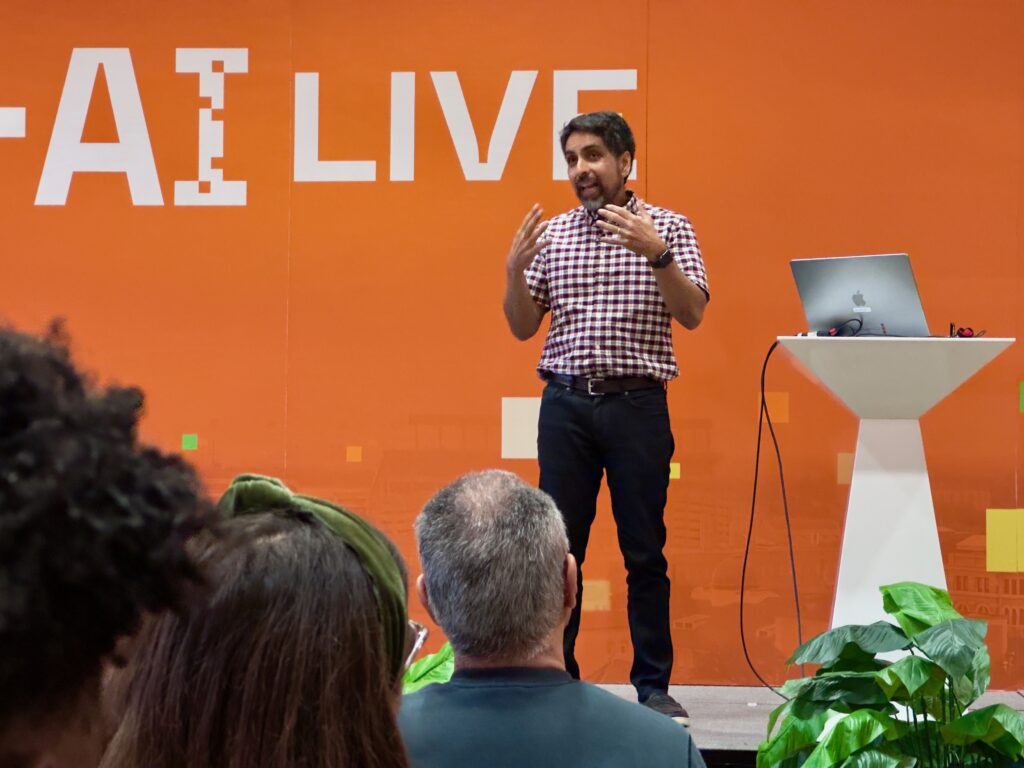Reflecting on the AI Live event hosted by the College of Natural Sciences at UT Austin last week, I am struck by the sense of community and collaboration that permeated the event. The gathering was a testament to our collective curiosity and commitment to exploring the vast potential of artificial intelligence within our unique context. I applaud Dean David Vanden Bout, Melissa Taylor, and the entire team that made this event a true celebration to cap off the Year of AI at UT.
One of the most memorable moments for me was witnessing the enthusiasm of the students. During Sal Kahn, founder of Kahn Academy, spoke the excitement was palpable as students waited in the hall to get in. It is a reminder of the thirst for knowledge and the drive to be part of discussions that will define our future. It was inspiring to see such a diverse group of individuals come together, united by a shared interest in AI and its implications. I loved his personal reflection on his journey to bring knowledge to everyone, everywhere. It was a reminder of the power of the Internet and its ability to create impact at scale.

The event itself was a tapestry of learning opportunities, spanning various tracks from research to health to ethics. It was a celebration of how AI intersects with different facets of our lives and how it can be harnessed to address complex challenges. The sessions were not just informative but also deeply engaging, sparking conversations that extended beyond the scheduled times.
What stood out to me was the collaborative spirit that defined the event. It wasn’t just about the presentations or the panels; it was about the interactions and the shared insights. The AI Live event was a microcosm of what we strive for in our roles – fostering an environment where innovation thrives through collaboration and where every voice can contribute to the dialogue.
Looking back, I am reminded of the importance of creating spaces where ideas can flourish and where the community can come together to explore new frontiers. It really reminded me of the early days of my career and the events we held at Penn State. Those small gatherings that turned into the TLT Symposium where we would routinely host over 500 faculty and staff to discuss innovations in the use of technology to support teaching and learning is what specifically comes to mind. The AI Live event, like the TLT events from PSU, was more than just a symposium; it was a celebration of our collective potential and a glimpse into the future we are building together. It reinforced my belief in the power of community and the incredible things we can achieve when we come together with a shared purpose.


